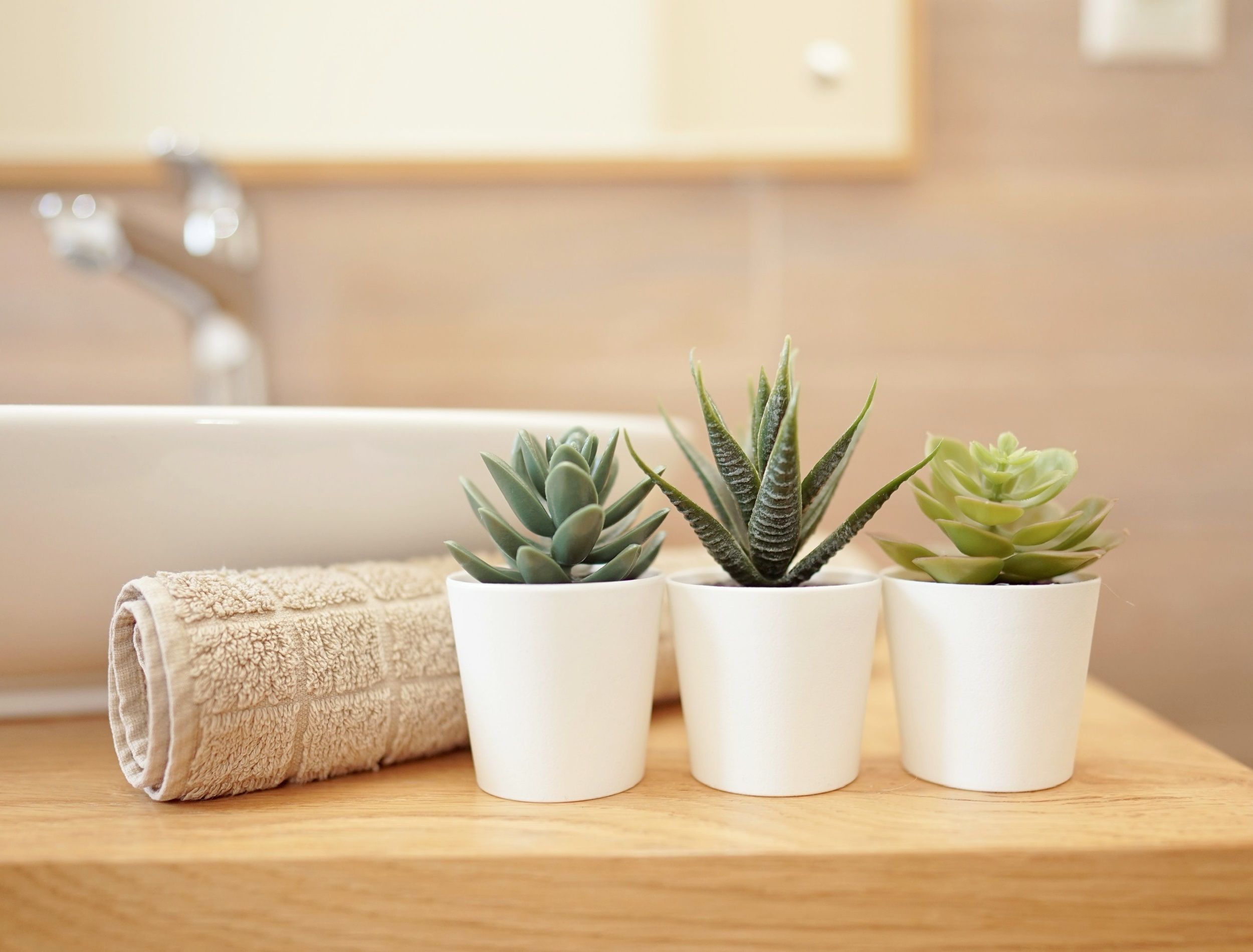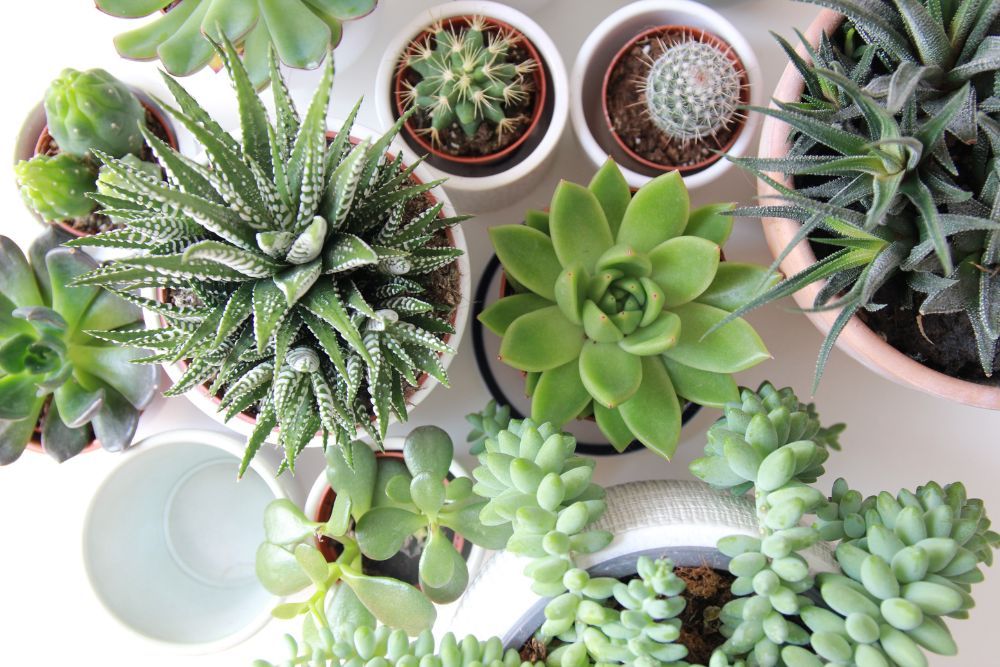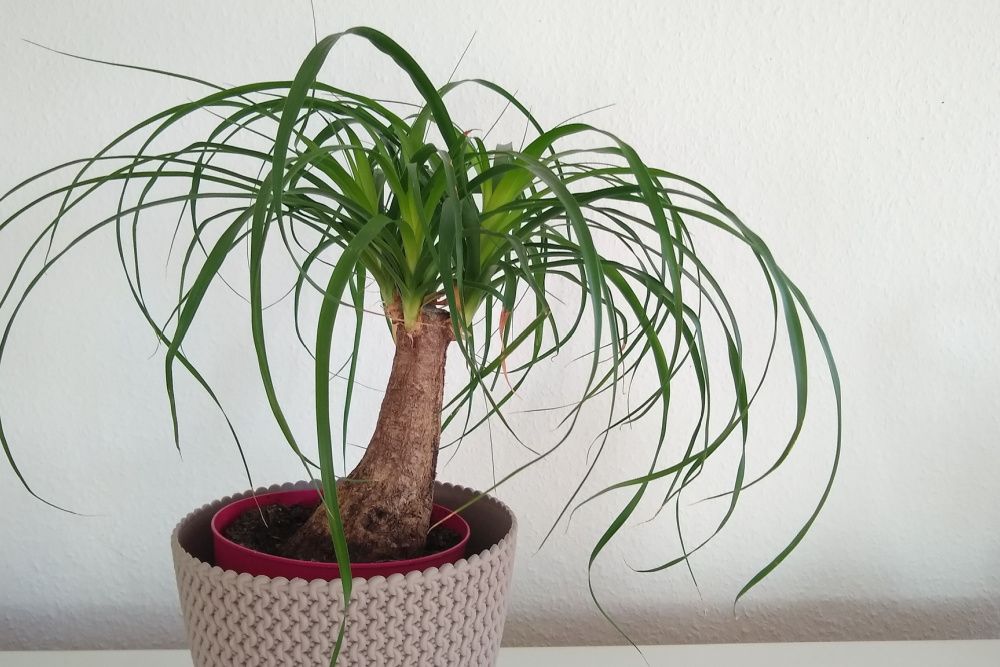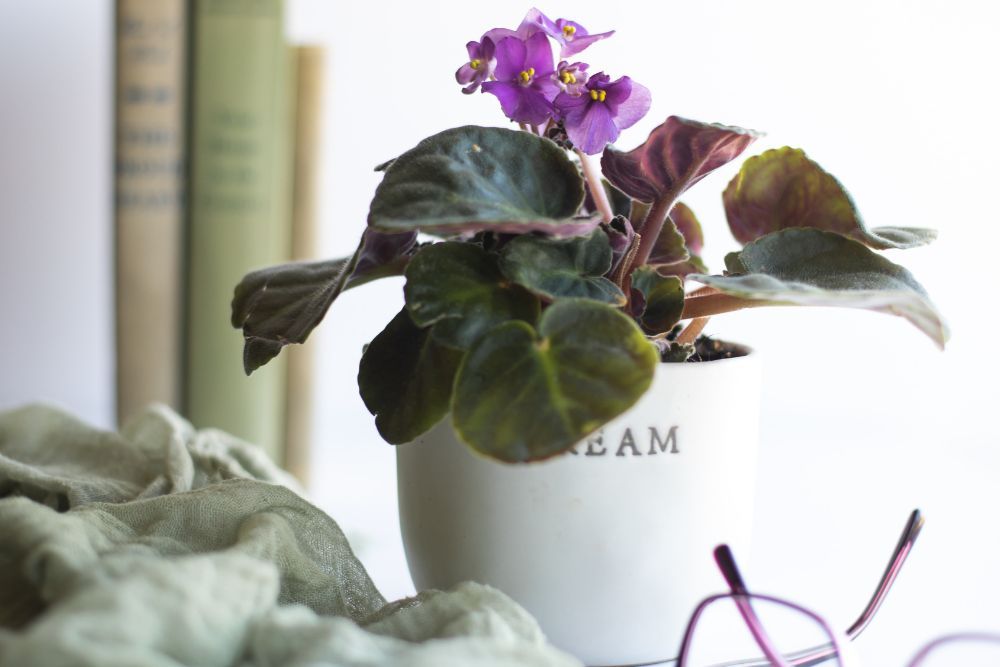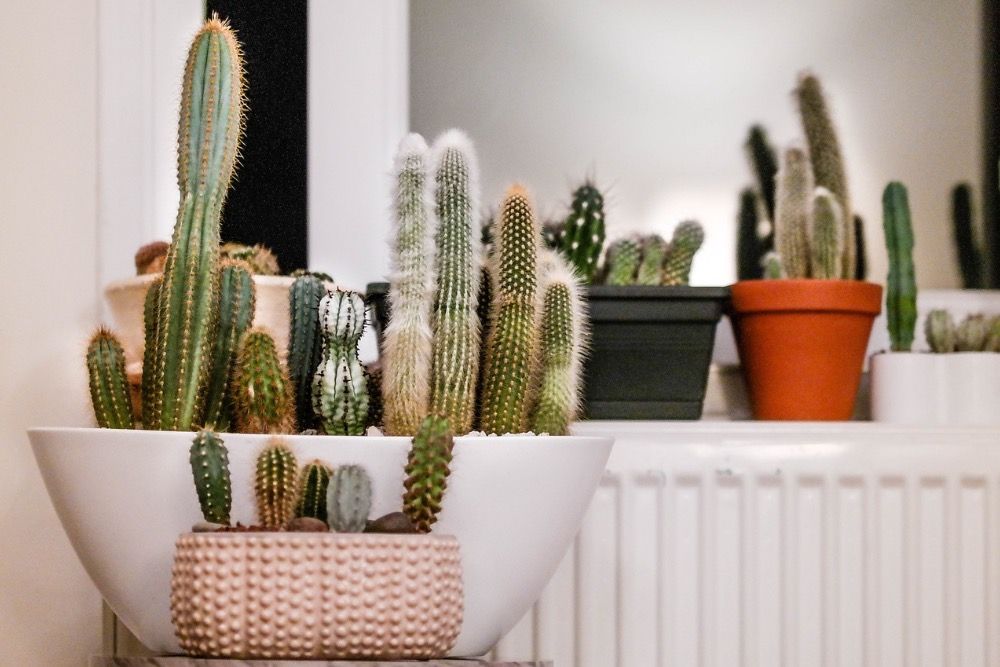Houseplants are usually a great addition to a bathroom. They can clean the air, add greenery, and create a relaxing space. However, not all plants love humidity. You might enjoy a long steamy shower, but that doesn't mean all your plants do! In fact, the humidity in bathrooms can harm some plants. Learn more about which houseplants you should avoid growing in your bathroom and where to plant them!
Succulents and Cacti
Image credits: Angele Kamp via Unsplash
Succulents and cacti are popular in many indoor gardens. These plants are low-maintenance and generally easy to look after. However, it would be best to avoid placing succulents in a bathroom.
Succulents and cacti love dry environments; it's where they thrive in the wild. Planting them in a moist, humid bathroom is the exact opposite of their natural habitat. The humidity from steamy showers can damage leaves. Water in the soil will also evaporate more slowly in a damp bathroom. This can make the roots soggy and even kill the plant.
Examples of succulents and cacti you should avoid in bathrooms include jade plants, aloe vera, hens and chicks, snake plants, bunny ears cacti, and prickly pear cacti.
Fun Fact: Cacti belong to the succulent family. Succulents cover a large group of plants that store water incredibly well. They are about 90 percent water! This fact makes them great at adapting to dry environments and deserts.
Ponytail Palm
Image credits: The Handyman via Shutterstock
Ponytail palms are a desert-loving plant. You can find them growing out in arid regions like eastern Mexico. These plants are a beautiful complement to any home. They grow about four feet tall indoors and are low-maintenance.
Ponytail palms thrive in dry environments. They won't mind if your home gets dry in winter, but they will protest if you place them in a humid bathroom. When ponytail palms get too much water, their roots will rot. If you catch this early enough, stop watering, and relocate the plant, it can sometimes heal itself. However, it's much better to place the plant in a dry environment in the first place!
Another reason to skip planting a ponytail palm in your bathroom is the warmth. In winter, these plants need cooler temperatures. They prefer areas that are about 50 to 55 degrees Fahrenheit. With regular hot showers and baths running, your bathroom can quickly get too wet for this houseplant.
African Violets
Image credits: Sixteen Miles Out via Unsplash
African violets are sensitive plants. Their delicate blooms can uplift any room. However, these plants need careful care to survive. The high humidity of a bathroom can rot leaves. Even getting water on the foliage can leave small fungal spots where the leaf has died. It is best to water these plants from the bottom or with a watering can that has a long spout. This way you can tuck it under the leaves to avoid damage.
With all the splashing about of a shower or bath, water droplets in the bathroom can easily harm an African violet. Its soil also needs time to dry out. One of the most common issues with African violets is their soft stems which are susceptible to overwatering.
These plants are prone to root rot so water with caution.
Where to Put These Houseplants Instead
Image credits: leonardoiheme via Pixabay
Living rooms, bedrooms, and home offices are excellent rooms for these plants. These spaces are usually drier, which is what succulents, cacti, ponytail palms, and African violets like best. Avoid placing these plants in the kitchen. Kitchens, like bathrooms, can get hot and humid with everyday cooking.
Succulents and cacti do well on windowsills as they enjoy the sun. Place ponytail palms and African violets away from windows, so they don't get scorched; These two plants prefer indirect light.
Then as a general rule of thumb, only water these plants when their soil is dry. This is usually about every one to two weeks. In winter, watering periods are spaced further apart, even monthly.
Pro Tip: Jot a note down in your calendar when you first water your plant. Then, keep an eye out for how quickly the soil dries out. Doing so will give you an idea of when you'll need to water your plant again.
Don't Go There!
A bathroom can be a great location to place plants that love high humidity. However, it's better to choose another location when it comes to succulents, cacti, ponytail palms, and African violets. These plants love dry arid regions in the wild. So in your home, it's no surprise they prefer rooms with low humidity.
What plants do you place in your bathroom? Pop a comment below to share your indoor gardening experiences. Then, share this article with your loved ones. Help your friends avoid placing these plants in the wrong spot!

